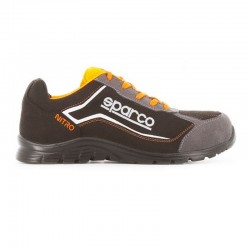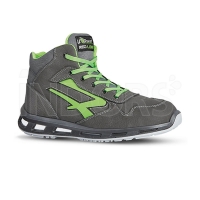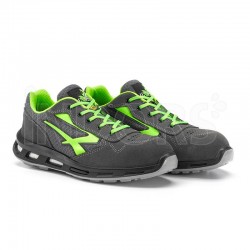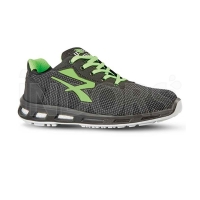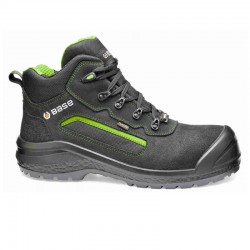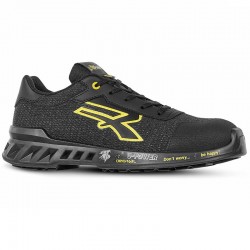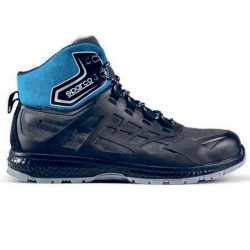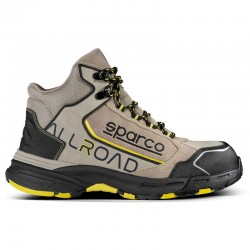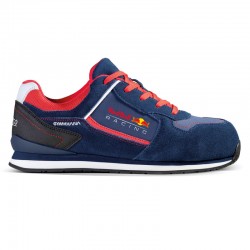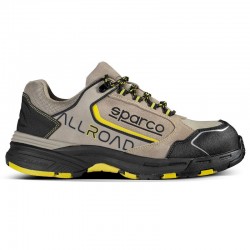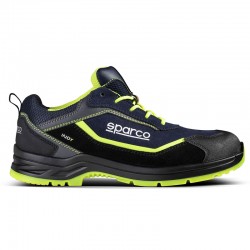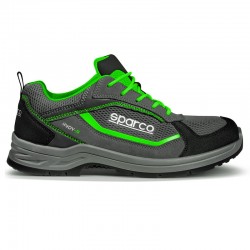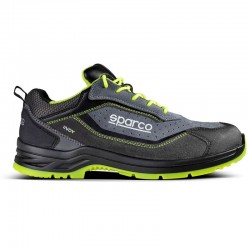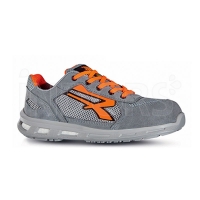
U-Power RL20476
Red Lion ULTRA S1P SRC ESD
Scarpe Antinfortunistiche
Unisex - Spring / Summer
S1P SRC ESD - EN ISO 20345:2011
| SB/S0 | Basic requirements, open heel |
| S1 | Basic requirements, closed heel |
| S2 | Upper resistant to water penetration but NO anti-perforation LAMINA |
| S3 | Upper resistant to water penetration - Puncture resistant sole - Grooved Sole |
| S4 | Class II rubber footwear |
| S5 | Class II rubber footwear - Puncture resistant sole - Grooved Sole |
| S6 | Shoe resistant to water penetration but NO anti-perforation LAMINA |
| S7 | Shoe resistant to water penetration - Puncture resistant sole - Grooved Sole |
| P | Puncture resistant lamina |
| E | Energy absorption from the heel |
| WR | Water resistant upper |
| WRU | Upper resistant to water penetration and absorption |
| AN | Protection of the ankle bone |
| M | Metatarsal protection |
| HRO | Sole resistant to contact with heat 300°C for 1 minute |
| HI | Heat insulation up to 150°C |
| CI | Cold insulation down to -17°C |
| FO | Hydrocarbon resistant sole |
| ESD | Protection from electric shocks |
| A | Anti-static footwear |
| C | Conductive footwear |
| CR | Cut resistance |
| SRA | Slip resistance on ceramic floor with water and detergent |
| SRB | Slip resistance on steel and glycerin floor |
| SRC | SRA + SRB combination |
| DGUV112-191 | Orthopedic insole adaptation |
| SC | Tip abrasion resistance |
| LG | Sole with heel detached from the sole for grip on ladder steps |
The quality of work shoes is crucial not only because they provide immediate protection, but because they preserve the worker's overall physical and mental health in the short, medium and long term. Each job requires a specific and appropriate safety shoe, based on the classification of safety standards that comply with European regulations on workplace protection.
Safety shoes are also classified according to their protection level and general characteristics, distinguished by their resistance and design, allowing you to choose the most suitable ones for your workplace.
In this buying guide, we'll help users choose the most suitable work shoes for their needs.
SRA: Slip resistance on ceramic floor with water and detergent
SRB: Slip resistance on steel floor with glycerin
SRC: SRA + SRB
P: Puncture resistant midsole
E: Heel energy absorption
WR: Water Resistance (improvement of WRU)
WRU/WPA: Upper resistant to water penetration since 2023
AN: Ankle protection
M: Metatarsal protection
HRO: Sole resistant to heat contact at 300°C for 1 minute
HI: Heat insulation up to 150°C
CI: Cold insulation down to -17°C
FO: Hydrocarbon resistant sole
ESD: Protection against electrostatic discharge
A: Electrostatic footwear
C: Conductive footwear (electricity)
CR: Cut resistance
SRA: Slip resistance on ceramic floor with water and detergent
SRB: Slip resistance on steel floor with glycerin
SRC: Combination of SRA + SRB
DGUV112-191: Orthopedic footbed adaptation
SC: Toe abrasion resistance
LG: Sole with heel detached from footbed for ladder rung grip
The last essential feature we want to highlight in safety shoes is their resistance to electrostatic discharge, indicated by the ESD (ElectroStatic Discharge) marking, which refers to a static electricity discharge between bodies that can be risky in work environments because, even if weak, it can ignite fires when flammable materials are present. These shoes are recommended in environments working with microchips, production of sensitive electrical parts, painting, laboratories, medical fields, and when working with flammable liquids and gases.
The right work shoes for you are those classified as safety standard S3 with water-repellent upper, anti-crush toe protection, oil- and hydrocarbon-resistant anti-slip sole, heel shock absorption, and anti-puncture insole.
Carpenters and woodworkers often need to bend and assume uncomfortable positions during work, requiring flexible and high-performance shoes. For those working indoors, we recommend S1P standard safety shoes.
If you regularly use welding equipment, you'll certainly need safety footwear that protects against sparks, without laces, and resistant to potential molten metal splashes. The right shoes for your needs are high-risk environment footwear in S3 HI HRO WG SRC safety standard.
You definitely need shoes that protect against hazardous dust, are water-resistant and anti-puncture. The protection level we suggest is S3.
You work indoors, in a closed environment where water resistance won't be a priority feature in your choice, but breathability certainly will be. The required safety standard will be S1 or S1P.
You'll need comfortable work shoes with anti-slip soles and uppers resistant to dust and water, but also flexible and high-performing. Our suggestion is the Lift Carpet model by Red Carpet. Shoes with all the safety features of S3 CI SRC ESD standard.


